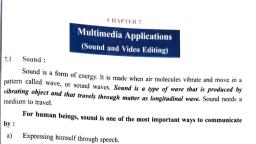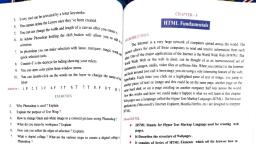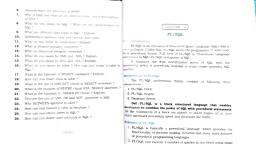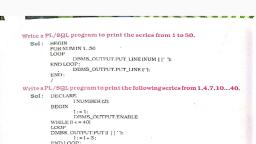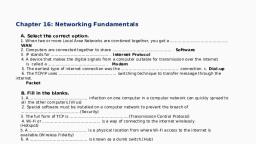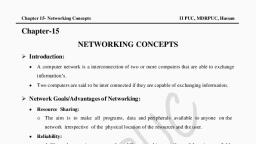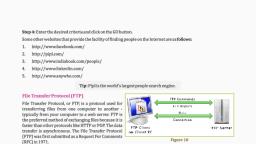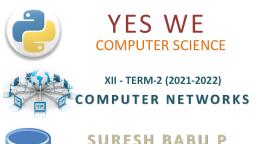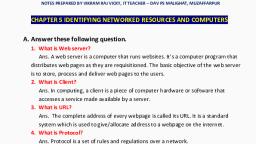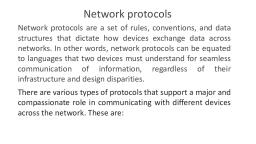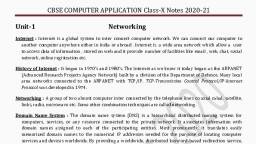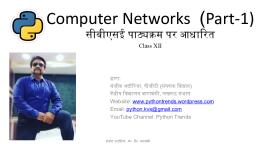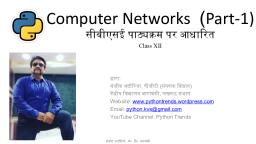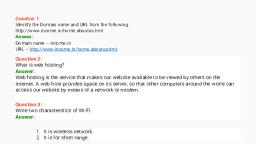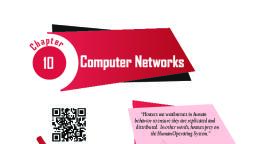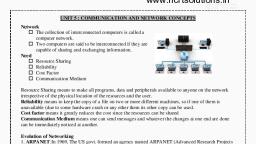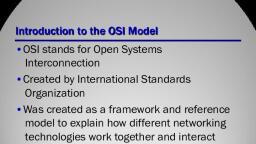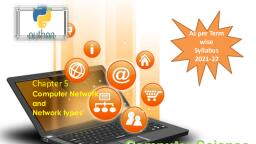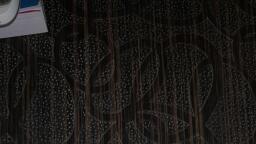Page 1 :
CHAPTER — 6, , Advanced We, , , , b Publishing (Java Script), , networking Fundamentals, , _pRODL CTION, , Networking 2 the practice of linking two or more computing devices together for, ye purpose of ae data. Networks are built with computer hardware and computer, oftware. Networking is referred as connecting computers electronically for the purpose, of sharing information. Resources such as files, applications, printers and software are, common information shared in a networking. The advantage of networking can be seen, clearly in terms of security, efficiency, manageability and cost effectiveness as it allows, collaboration between users in a wide range. Basically, network consists of hardware, component such as computer, hubs, switches, routers and other devices which form the, network infrastructure. These are the devices that play an important role in data transfer, from one place to another using different technology such as radio waves and wires., , Computer Network :, , Def -— A Computer network is an interconnection of geographically distributed, multiple computers in such a way that meaningful transmission and exchange of, information become possible. Simply, when two or more computers are directly or, , indirectly connected with each other for the purpose of sharing resources is known as, computer network.” ., , , , , , 9 “ an) ,, (201) |. (Computer Science-X1)
Page 2 :
Advantages of Computer Network, , 4.2, , Woon) ma, , , , seca re, ! ~ ows, cite :, = Xm SHARNG $, , @SHARNG of a a,, “HARDWARE SHARNG DATA, , Hardware such as printers can be shared by all the computers on the network., Some software and files such as databases can be shared by different users., Users can work together as networked computers can communicate with each, other easily and quickly via email or internal messaging systems., , An Internet connection can be shared., , File storage facilities can be shared and files therefore accessed from any, networked computer., , Improved security as there is central control over user access, which programs,, data and hardware users have access to., , Files can easily be backed up centrally., , Computer Network can be classified into different categories:, , LAN (Local Area Network), MAN(Metropolitan Area Network), WAN(Wide Area Network), PAN(Personal Area Network), , , , , , (202) | (Computer Science-X1)
Page 3 :
Local Area Network) :, , pAn( i tees, , _ ected to each other in a small area such as building, office.LAN is used for, “onnectiNg tio: OF there Demonal computers through a communication medium, que 8S twisted pair, coaxial cable, etc. It is less costly. The data is transferred at an, , extremely faster rate in Local Area Network. Local Area Network provides higher, , security., a, Local, ~~, ij MAN(Metropolitan Area Network) : A metropolitan area network is a network, that covers a larger geographic area by interconnecting a different LAN to form a, larger network. Government agencies use MAN to connect to the citizens and, , Local Area Network is a group of computers, , , , , , private industries. In MAN, various LANs are connected to each other through a, , telephone exchange line. It has a higher range than Local Area Network(LAN).e.g., cable TV network, , , , iii. WAN(Wide Area Network) : A Wide Area Network is a network that extends over, , a large geographical area such as states or countries and continent or whole around, the world. A Wide Area Network is quite bigger network than the LAN.A Wide, Area Network is not limited to a single location. The internet is one of the biggest, , (203) | (Computer Science-XI)
Page 4 :
WAN in the world. A Wide Area Network is widely used in the field of, Of Busin, , government, and education., , , , aa Network) : ‘Reena Area Network is a network arrai :, idual person, typically within a range of 10 meters. P en devices - are used to develop the personal area network are ie is ., , phones, media player and play stations. Area Network covers an area “, , feet., , iv., , , , , , Se o, . ’, PAN Neus, rork ., ooo”, eeeaece oo? i, i, . .- 9), ) rs *., 4, Pd ., ., s - [emma, ¢° 2, , 5 :, (204) | (Computer Science-X])
Page 5 :
a, , 3, , ra, , onl, , jt, , Il., , 205, , 2), , lt, , network Protocols :, f, , rotocol defi ru, a network 1, efines rules and conventions for communication between, : twork ‘ocols i an, k devices: e . protocols include mechanisms for devices to identify and te, tions with each other, as well as formatting rules that specify how dat 7 k lata is packag, , and received messages., Classification of network protocols :, TCP/IP, , HTTP, , FTP, , TELNET, , SMTP, , PPP, , IP addresses : An IP address is a number identifying of a computer oF another, device on the Internet. Every machine on the internet has an unique number, assigned to it know as IP address. An Internet Protocol address (IP address) 1s 4, , logical numeric address that is assigned to every single computer. printer. switch., router or any other device that is part of a TCP/IP-based network. An IP address, , serves two principal functions: host or network interface identification and, , location addressing. Internet Protocol version 4 (IPv4) defines an IP address 2s, a 32-bit number. An example of an IPv4 address is 192.168.10.35, , tocol/Internet Protocol) : TCP/IP is 2 set of, , TCP/IP (Transmission Control Pro, more computers to communicate. TCP/IP, , networking protocols that allows two or, specifies how data is exchanged over the intemet by providing end-to-end, , communications that identify how it should be broken into packets, addressed., transmitted, routed and received at the destination. TCP/IP requires little central, management, and it is designed to make networks reliable, with the ability to, recover automatically from the failure of any device on the network. TCP/IP uses, , ation in which a user oF machine (a client) 1s, , the client/server model of communic:, provided a service (like sending a webpage) by another computer (a server) in the, , (Computer Science-X1)

